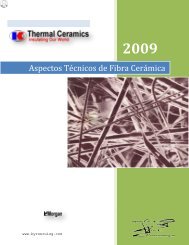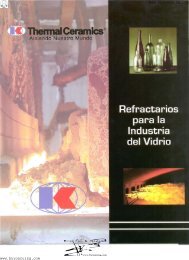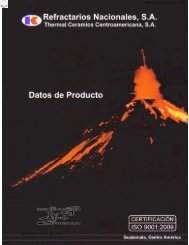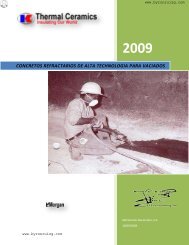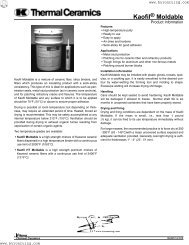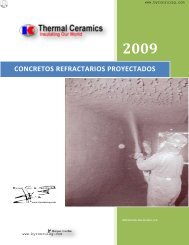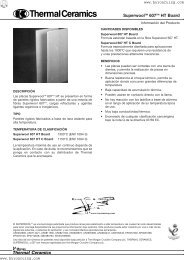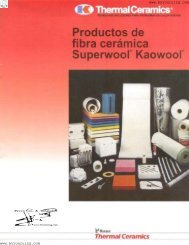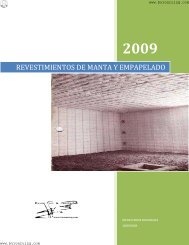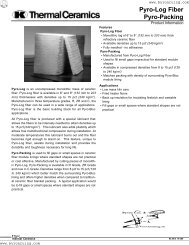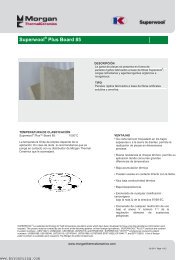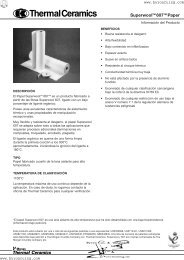Untitled
Untitled
Untitled
You also want an ePaper? Increase the reach of your titles
YUMPU automatically turns print PDFs into web optimized ePapers that Google loves.
www.byronruizg.com<br />
www.byronruizg.com<br />
It was an unexpected but important result that this sample caused fewer lung effects than<br />
any other sample tested. A second group of independent scientists in Edinburgh found<br />
this sample to be inert when injected into rats 1 .<br />
These early results with RCF already gave an indication that crystallised end of life fibres<br />
did not constitute a health hazard.<br />
There are ethical and legal reasons for trying to avoid further experimentation on live<br />
animals, and so Thermal Ceramics was keen to undertake further tests on Superwool ®<br />
fibres using proven “in-vitro” techniques. The most reliable technique available was to<br />
study the effect of fibrous dust on macrophage cells, of the type which are responsible for<br />
clearing the dust from the deepest parts of the lung.<br />
Toxic forms of crystalline silica have been found both to kill macrophages in-vitro and to<br />
cause disease in animals. The investigation chosen therefore was to observe the effect<br />
of heated Superwool ® fibres on macrophage cells. The experimenters would be asked<br />
to search for any effect produced by the Superwool ® fibre, which was similar to toxic<br />
crystalline silica.<br />
Such an experiment requires considerable expertise to produce reliable results. For this<br />
reason the Fraunhofer ITEM was contracted to design and carry out the macrophage<br />
experiments.<br />
Crystalline Silica<br />
Samples of Superwool ® 607 ® , Superwool ® 607 ® Max and Superwool ® 607 ® HT<br />
were heated to 150°C below their classification temperature and also to classification<br />
temperature in order to simulate fibres which had been used near the hot face of a furnace<br />
insulation. Unheated fibres were also produced as controls.<br />
Suitable samples of each type were then supplied to Fraunhofer ITEM for the experimental<br />
programme. Since fibres can also cause damage to cultured cells simply through their<br />
shape, it was necessary to use a method to distinguish such non-specific toxicity from<br />
the effects of silica. This was accomplished using aluminium lactate. This is a proven<br />
compound which binds to silica and renders it non-toxic but has no effect on other<br />
activities.<br />
All samples were therefore tested both alone and with a very low concentration of<br />
aluminium lactate; the difference in the measured effects between the two samples<br />
was then a direct measure of silica activity (see results table). A standard quartz (crystalline<br />
silica) sample (DQ12) was used as a reference to verify that the methods worked.<br />
Two measures of toxic activity were used. Firstly, the ability of the fibres to cause the cells<br />
to leak was determined by measuring the amount of an enzyme (lactate dehydrogenase)<br />
normally found inside the cells that had leaked into the medium outside. Secondly, the<br />
amount of DNA (chromosome) damage was measured using an assay in which the<br />
number of strand breaks in the DNA from individual cells is quantified. The standard<br />
active quartz sample (DQ12) was clearly positive in both these assays; however, none of<br />
the heated fibres showed significant silica activity.<br />
57



